The Quest Of A Myth
By M.A.Narasimhan and Jayashree
From time immemorial the history of the world has been in the oral narrative form. These narrative oral records gave a description of the origin and growth of the culture and civilization of the place. They were by and large in metrical form in composition and were embellished with poetical imagery. They were generally eulogies of great heroes and of events which had a dramatic impact on the cultural tradition of those civilizations.
Thus narrative history was a cultural legacy that was handed down from generation to generation. It showed them what they were in comparison to what they are now and how their traditions are indicators of the unique point of view about values of life and so on which their civilization had developed over time.
In the last two centuries this narrative techniques of histories of civilizations have taken a dramatic transformation due to the impact of science. This brought about an over emphasis on the logical approach alone as the sole criteria to evaluate the conclusions of any branch of knowledge to be valid as fact.
Due to the tremendous progress in the field of material sciences which resulted in coming of age of archeology, epigraphy, carbon dating and others as viable scientific methods. The impact of this transformation resulted in the emphasis that valid history can only be based on material artifacts like pottery, inscriptions and other tangible material evidences and not tradition, folk lore etc.
Hence the modern historians relegated all that was oral history into mythology. For them mythology was an art from for cultural entertainment rather than to be considered as serious history of a culture or civilization. Hence history became, instead of a robust lively narration of the story of cultures of our forefathers, a mere skeleton of facts and figures with very little possibility of a valid impact on the psyche of the society. Hence in modern time’s, history lost its prime position of importance as a guide to formulate the opinions of the people in order to preserve the culture and traditions that are unique to each civilization.
Bharata was no exception. Even though it was acknowledged as the repository of the most ancient poetical creation namely the Vedas and was acknowledged to be one of the most ancient civilizations of the world all Its oral records were relegated as pure mythology – a figment of imagination of the ancients.
So was the fate of the history of the river Sarasvati. Even though the traditional texts of Bharata from the Vedas on wards spoke about a mighty river called Sarasvati, by the time the modern historians tried to look at the history of Bharata sarasavati had disappeared. So all information associated with river Sarasvati was relegated to the background. It had scant attention of the academic world for a long time. She became a myth.
But river Sarasvati continued to be a reality in the minds of the masses of Bharata as a sacred river who had gone underground. Fairs, melas were celebrated at places of pilgrimage believed to be on the banks of river Sarasvati during the rainy season. People believed that river Sarasvati would appear in the tanks and ponds during the rainy season at the places of pilgrimage to bless them and would throng to take bath and feel sanctified by the waters of river Sarasvati.
.
The shodha yatra (an archaeological quest):-
It was in the year 1983 a resident of Nagpur Sri. Moropant Pingle‘s initiative a meeting of historians and scholars was called in Kurukṣetra, to discuss the possibility of throwing more light on the ‘lost river Sarasvatī’. A Samiti was formed under the name “Sarasvatī Nadi Shodh Prakalpa’ under ‘Itihāsa Sankalana Yo j a n ā’.
Universally acknowledged archaeologist ‘Padmasri’ Dr. Vishnu Sridhar Wakankar famous for his discovery of the Bhimbetka cave paintings, assumed the charge of the Project. He invited scholars and workers from the states like Himachal Pradesh, Haryana, Rajasthan and Gujarat and formed a ‘Mandal’. This Mandal did a ‘Shodha Yātrā’ to study the lost Vedic Sarasvati River from various angles, from November to December 1985.
The quest for river Sarasvati had not been knew. There had been quite a few attempts in the past hundred years.It was in 1883 one General Sir Cunningham while surveying the Himachal Pradesh of today, heard the name of a local river as ‘Sarsuti’. He became excited for he remembered the river ‘Sarasvatī’ mentioned in Rgveda. He visited the place and noted in his dairy “Yes, this is the River Sarasvatī with its angular banks; and full of stones and boulders, as described by Al-bi-runi during the assault by Mohammed of Gazni.” (Archaeological Survey of India Vol. 14, p-88, 1887). Similarly, great scholars like R.D.Oldham (1886), Arther A. MacDonell (1887), C. F. Oldham (1893), Sir Aurel Stein (1942) had attempted to depict a true picture of the culture nourished by the river Sarasvati.
While giving the reference of 21 rivers mentioned in the Sukta “imam me gange yamune Sarasvati shutudri—-“ etc. of the Mandala 10.75.5 of the Rigved, MacDonell (an associate of Mr. Keith) has said : “The ‘Sarasuti’ mentioned here, is the river Ghaggar flowing near Patiala. It disappears in the desert near Sirsa.”
After becoming the Director of Industries (Rajasthan State), the former Head of Technical Education Department in Benaras Hindu University and the founder of Industrial Chemical Industries in Bharat, Padmabhushan Dr. N. N. Godbole conducted a survey of this region through the desiccated channels of River Sarasvati in 1963. Its Report was published in a book form by the Rajasthan State under the title ‘Rigvedic Sarasvati’. In this book, there is the record of what Dr. Godbole had carried out, a detailed review of storages of lime-stone in the environs of Bikaner, the stony salt of Sambar region, ores of Didwana and Panchbhadra and the remnants at Suratgarh, Rangmahal and Kalibangan found during excavations.
Sri H. S. Parikh wrote an important essay in the Geological Survey of India, Volume 5, (p13) on the subject ‘The deserts of Rajasthan’, where the River Sarasvati is supposed to have disappeared.
The team along with the previous study took also into account the record in the Mahabharata of the detailed narration of the pilgrimage of Balarama on the banks of river Sarasvati from the sea shore to the Himalayan origin of the river Sarasvati.
On hearing the quest for river Sarasvatī, by the mandal, the Director of the “Central Arid Zone Research Institute” of Jodhpur, provided Dr Wakanakar with the satellite image studies that had been going on from 1972 onwards, about a river long dried up, suspected to be the Vedic Sarasvatī.
When the team of Dr. Wakanakar studied these maps and superimposed them on the route that Balarāma took they found that it was almost the same and it also coincided with the traditional route map the team had traced with the help of folklore and local legends. Thus the folk legend map, the map of Balarama’s travel and the maps of the satellite all fairly coincided and it emboldened the Mandal to come to the strong conclusion that they are on the track of the ‘lost river Sarasvati.’
The Shodha Yātrā began from Adibadari (Adhabadari) situated on Sivalik hills on 17th November 1985. After covering a distance of 4000 kms the Shodha Yātrā completed its travel at Prabhāspātan on 18th December. The group found a number of archaeological sites along the way. Many artifacts were collected. They recorded the folk-lore and collected data of the shifting phases of the land mass over centuries.
The maps provided by the Jodhpur institute had given very interesting information. The images that the American satellite LANDSAT launched in 1972 had located a huge dried up river running from the Himālayās to the Rann of Kutch. The analysis of the images proved that the river had existed in all its glory some 6000 years ago and dried up completely in and around 2000 BCE.
The multidimensional satellite images proved to be most useful in establishing the existence of Vedic Sarasvatī and many an interesting facts derived from the images made the scientists of the world to sit up and take notice. It was surmised from the images that the River Sutlej was the principal tributary of River Sarasvatī in those days. The riverbed of Vyās (Bias) showed that it had no connections with Sutlej. Vyās (Bias) was merging with river Sindhū independently.
Because of that it could be seen that river Sarasvatī was directly flowing into the Rann of Kutch along with river Sutlej via Nara channel. From the study of the palaeo channels, some important aspects of the Story of river Sarasvatī also came to light.
It showed that the river Sarasvatī instead of her present small rivulet form was a very huge river. The satellite images showed that the river Sarasvatī was 6 to 8 kms wide in normal times and around 20 kms during the rainy season. Huge indeed! And its route from the Himālayās to the Rann of Kutch was around 1600 Kilometers!
The flow of river Sarasvati
Originating from the glacier at Har Ki Dhun, the River Sarasvati enters into the planes from the Shiwalik hills of Ardhabadri. From there one of her streams flew through Pehoa-Sirsa-Hanumangarh-Suratgarh-Marot-Kishangarh-Tanot-Ghotaru-Shahgarh-(Pakistan)Bahawalpur-Sindh region and the Rann of Kutch. The second possible path was Kurukshetra-Jind-Hansi-Didvana-Nagor-Panchbhadra-Balotara-Rann of Kutch. And the third probable stream was Kurukshetra – Kaithal – Kalayan – Nohar – Lunakaransar – Bikaner- Pokhrann – Balotara. This third path got mingled with the second stream. One more stream was going further to Anupgarh via Beriwal-Fort Abbas thence to Rann of Kutch. These streams have been noticed also in maps prepared by analyzing the images given out by the satellite.


The Himalayan glaciers

Shivaliks.

Sarasvati sarover (origin of Sarasvati in the plains)
The Geological View
“Geological record indicates that long long ago the waters of the Himālayās were frozen and that in the place of rivers, there were only glaciers, masses of solid ice. When the climate became warmer, the glaciers began to break up and the frozen water held by them surged forth in great floods, inundating the alluvial plains in front of the mountains. The melting of glaciers has also been referred to in the Rg Vedic literature in mythological terms; it is portrayed as the fight between Indra and the demon Vratra. The waters that flowed out as seven mighty rivers are called as the ‘Sapta Sindhū’ in the Rg Veda. The rivers traced from east to west, as ‘Sapta Sindhū’, are Sarasvatī, śutudrī(sutlej), vipāśā(bias-vyās), asiknī or candrabhāgā (chenāb), parosnī or irāvatī (rāvi), vitastā (Jhelum) and sindhū (Indus). Among these, only the Sarasvatī and the Sindhū flowed from the Himālayās right up to the sea. The hymns in praise of Sarasvatī are probably some of the oldest hymns, composed more than 8000 years ago.
The Sky Epigraphs
Professor Narahari Achar of Memphis University used the pañcāṅga Software to locate dates of the celestial events as mentioned by Vyāsa in the Mahābhārata. This pañcāṅga Software was compiled by a Japanese professor using the planetarium software called Sky Map by NASA used for calculating the relative movement of the celestial bodies in relation to our earth. He applied it to more than 150 references to the stellar positions that are available In Mahābhārata.
Especially Prof. Achar took the mention of the two Eclipses that happened within the span of fifteen days during the Mahabharata war and the day of the fall of Bhīṣma and using the pañcāṅga software he got the date of the war as having taken place in and around 3000 BCE.


Vedic river Sarasvati
That is how it was concluded that Balarāma travelled on the banks of river Sarasvatī in 3000 BCE, showing that the river Sarasvati was on its final stages of disappearance. Even before Prof. Achar’s study, nearly a century ago, one advocate by name Kota Venkatachalam of Tamilnadu, had come to the same conclusion by a laborious calculation of the celestial events of Mahabharata war using the Ephemeris.
The agencies like ONCG, BARC and ISRO and the governments of the three states namely Himachal Pradesh, Rajasthan and Gujarat continued their exploration about the lost river Sarasvati right in earnest. They searched out the subterranean water-sanctuaries by determining the Palaeo-channels of Sarasvati River through their Departments of Subterranean Water, Ultra-Sensing Institutions.
The contribution made by the Regional Ultra Sensing Service Centre of ISRO at Jodhpur needs a special mention in this context. By dint of their untiring hard work for 7-8 years, they have prepared and presented a detailed map of Palaeo Channels of Sarasvati from Rann of Kutch in Gujarat to the Adibadri in Hariyana by analyzing the images sent by the Geo-static Satellite.
Similarly, the archaeologists have strived very hard for past 10-15 years and presented before the entire world the special features of the civilizations pertaining to the Sarasvati valley found at Dholvira in Gujarat; and at Banavali and Rakhigarhi in Hariyana.
The Central Arid Zone Research Institute, Jodhpur investigated extensively with the help Indian Space Research Organization and came to the conclusion that there was an underground river flowing from the Kailāsa Mānasa Sarovara to Gujarat under the dried up river bed of Sarasvatī. The credit of this study goes to Dr. Yashpal and his colleagues.
Bhabha Atomic Research Centre, tested water from more than 800 bore wells in Rajasthan, on the old Sarasvatī river course and did a sophisticated Tritium analysis in the 250 kilometre length of the river bed. It showed that the water of this underground river was of Himalayan glacial origin and could be dated to be between 8,000 to 14,000 years old.
So we have a strange combination of legends, folklores, Satellite imagery, Geological, Glaciological and Archaeological evidences all pointing to one and only river Sarasvatī and also the dates given by tradition, science and modern analysis all coincide without much of a contradiction. Perhaps in the history of the world this is the only event where all branches of knowledge fairly agree on a single issue.
Sarasvatī – Sindhū Civilization
We all know of the Harappan and Mohenjo-Daro excavations in the area generally called the Indus or Sindhū Civilization. The excavations were done in 1921 and 1922. And it is a fact that now most of the excavated sites on the banks of Sindhū are now in Pakistan.
So after all the excitement due to geological and textual evidences, excavations started on the so called Sarasvatī basin. More than 2600 sites archeological sites were located and excavation started in many prominent sites. The archeologists have been able to locate civilizations that could go back to 20 to 40 thousand years.
There was not much of a difference between the Harappan sites and the sites excavated on the banks of Sarasvatī. It is also to be noted that archeological sites were found on both sides of the River Sarasvati unlike the one sided sites on the Indus.
Kālibangan near Delhi has been one of the largest towns of the Sarasvatī civilization. This was not just a pastoral civilization. It was a thriving maritime civilization having trade with pre- Egyptian civilizations of Central Asian and Mesopotamia.
The other important places on the banks of the river were the famous ports, Lothāl and Betdvārakā and townships of Rupār, Rākhigharhi, Chanhudaro, and Dholavira. Some of these townships had around 40,000 population. Dholavira had one of the world’s earliest water conservation systems ever excavated.
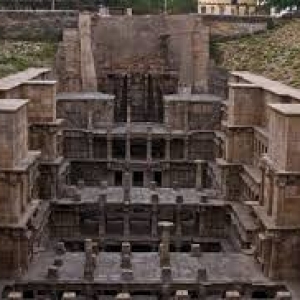
Rani ki vav

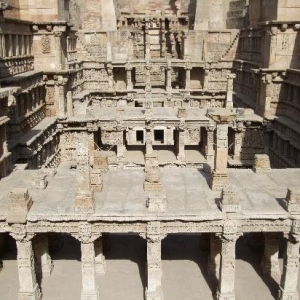
One such example is that of ‘Rani ki vav’ at Patan on the river bed of sarasvatī. Satellite photographs have shown a large rock-cut reservoir, a technically constructed rainwater harvesting system extending from the walls of the city, without which the settlement would not have thrived in the sparse rainfall of the desert.

Buildings, roads, burnt brick walls Kalibagan

In all these places we find very well laid out drainage system, houses built with burnt bricks and so on. Fire-altars were built in public places. Householders possessed a sump, or collection chamber to deposit solid waste in order to prevent the clogging of city drains



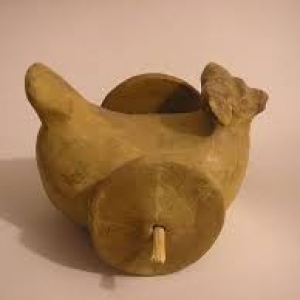
Toys at kalibangan

Drains, manholes and cesspools kept the city clean. We also have got vessels, idols and ornaments made out of earth, shell and metal. They seem to have used a script which is the same as the Sindhu script. Many attempts have been made to decipher the script. But scholars have not been able to come to a conclusion about how to read it. They are still a puzzle.
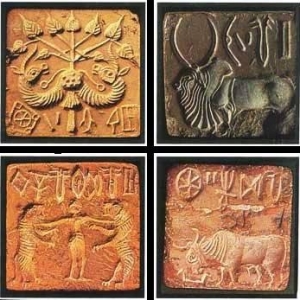
The Sarasvatī seals

Sarasvati script
One thing is certain; that it is the same civilization that thrived between the rivers Sindhū and Sarasvatī. That is why now we can call the whole thing as Sarasvatī – Sindhū civilization. After all it has been the home land of the āryans who designed and projected a culture known as the ‘āryan culture’.
Investigations showed that they were a maritime nation wandering over the seas and knew every culture worth the name of those days. They bharateeyas of those days were doing extensive trade with other nations by sailing overseas. In those times there were two major ports, one was Betdvārakā of the Yadavās which is now under the sea and the other was Lothāl which is under ground.

Lothal artist’s sketch
Lothāl is one of the most ancient ports of the whole world. Lothāl’s dock is the world’s earliest known vital and thriving trade centre. It traded in beads, gems and valuable ornaments to the far corners of West Asia and Africa. Its activity stretched across the frontiers of Egypt, Bahrain and Sumeria. Its scientists used a shell compass to navigate. They had divided the horizon and sky into 8–12 parts, pioneering the study of stars and advanced navigation, 2000 years before the Greeks.

The Ornaments
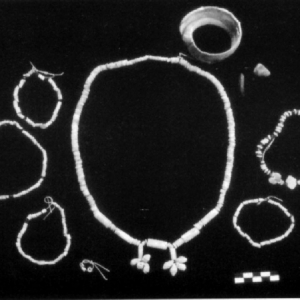
Lothāl’s people were responsible for the earliest portrayals of well known fables of today in art and sculpture. Metal ware, gold and jewellery and tastefully decorated ornaments attest to the culture and prosperity of the people of Lothāl whose products were in great demand in the west.
An ivory workshop with sawn pieces of Ivory for boxes, combs, rods, inlays and ear studs were found during excavations. The Lothal excavations were done by our own famed archeologist Dr. S.R. Rao of Karnataka who is also the discoverer of Betdwārikā. Lothāl imported a larg amount of raw materials like copper, chert and semi-precious stones from Mohenjo-daro and Harappa, and distributed it to inner villages and towns to create arte facts.
It also produced large quantities of bronze celts, fish-hooks, chisels, spears and ornaments. The stone blade industry catered to domestic needs. Fine chert was imported from the Sukkur valley of Bijapur Karnataka. Bhāgvata supplied semi-precious stones while chank shell came from Dholavira and Bet Dvārakā.

Implements

Coins weights etc.
These discoveries showed that the Bharateeyas along with the Sumerians were the earliest rulers of the sea in this area, nearly 3000 years ago. Earlier even to that of the Greeks and Egyptians. This activity started to cease as river Sarasvati started drying up and hence the people started migrating to other river plains. The Purānas have identified five such groups of migration. Over the years some of these people migrated to the South and made Gujarat and Konkan as their home land. These people are still identified as ‘Sārasvatās’ by the local people.
Now what ?
Today in Bhārata there is a great work going on in an unprecedented scale of joining all the rivers of our land which has never been attempted in any part of the world. It is as magnificent as the attempt of Bhagiratha in bringing Ganga to earth.
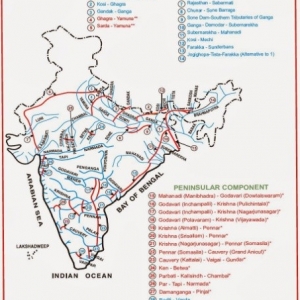
The national river grid map
The river that went underground about 3000 years ago is coming up today to give relief to more than 200 million people in terms of water and food. The river Sarasvatī which was the cradle of our civilization five thousand years ago is to come up to pour the prosperity again, that she poured on king Nahuṣa then. The first step in this great revival is the cleaning, opening up and joining of the blocked old palaeo channels of the river Sarasvatī from Adha badri to Pehova (the Prthudaka of Mahābhārata.) which is almost complete.
The Sarasvatī Mahānadi Roopā canal (Nahar) has been completed as Rajasthan Nahar (canal) for a distance of 1000 kms in Rajasthan. An extension of the canal by another 150 kms will take the Sarasvatī waters into Gujarat. The revived river is fed from the waters of Sutlej and Beas rivers sourced from Mānasarovar glacier of Mt. Kailāsa. The rivers have been dammed at Pong and Bhākra Nangal. A reservoir created at Harike feeds the revived river. It has helped to bring about 10 lakh acres of land under cultivation in Rajasthan and provides drinking water to cities such as Jodhpur, Jaisalmer, and Gedra Road. It is interesting when on the dried up river bed of Sarasvati in Rajasthan when bore wells were drilled water within 100 feet without any effort sprang up, for the water pressure of the underground river was so high.
Now because of the waters of river Sarasvatī there is an increase in the crops like Almond, olive and other oil seeds along with green forest coverage to increase water retention in the soil in Rajasthan. The work has also started in bringing greenery to the Sivālik hills, Marusthali, the mud choked Rann of Kutch in Sourāstra.
In the plains under the Sivālik hills the Sarasvatī sarovar has been rebuilt to gratify the devotees and pilgrims. This sarovar is 40 kilometres north of Yamunā nagar of Haryana near ādi badari or Adha badari

Sarasvatī saravor

Adha badari (Himchal)
Dr. Bhattacharya of Kalpakkam Atomic Centre has found a way of converting Sea water into potable water at a cost of just 4 paise per litre .Using his technique it is proposed to convert the salt water of the present luni river (the old Sarasvatī) into sweet water.

Sarasvati meeting the sea.
Revival of River Sarasvatī is thus part of the project to create a National Water Grid including the interlinking of rivers and making every river of the nation a jevanadī, a perennial river to help achieve tripling of agricultural production and empowering the people living in the villages.
But reviving of a literally a dead river and joining them to the national grid of rivers requires an engineering mind, that too, a mad but a dedicated mind and that was of Dr S. Kalyanaraman
Contribution of Dr. S. Kalyanaraman

It was Because of his tireless effort, we have detailed information regarding various facets of the studies on the sacred river Sarasvatī and the culture that blossomed on her banks. Dr. Kalyanaraman is a graduate in Economics. He has mastery over many languages. He secured a Doctorate in Public Administration from the Philippines University. He after completing 18 years of successful service in the Asian Bank, in 1995 dedicated himself completely for the cause of ‘Sarasvatī Nadī Shodh Prakalpa’. He floated the idea that it is possible to rejuvenate river Sarasvatī by making the subterranean waters available and flowing and make River Sutlej perennial using the desiccated beds of Sarasvatī through the Rajasthan Canal.
It is something unprecedented in the history of the world to have a mighty river a support to many towns and empires disappearing without a trace for thousands of years and to be rejuvenated and flowing on the land of Bharata to bring the prosperity that was lost with its disappearance. After 5000 years the sloka in Mahabarata on river Sarasvati becomes relevant again.
(Ma.Bha. Shalya-Gada Parva Ch. 54.38.39)
“Where else can one get the delight of those who remain near Sarasvatī?
Where else can one feel the greatness that is felt while living near Sarasvatī?
Those, who have gone to heavens after seeing the Sarasvatī,
will ever remember the river Sarasvatī.”
“Sarasvatī is the holiest of all the rivers.
She always brings benefit to the people.
On securing Sarasvatī, the sinful people shall
never be worried in this world or in the other”.
“Om tat sat”




